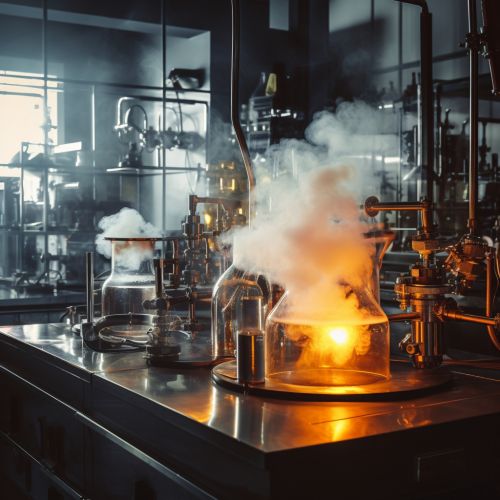Photochemistry
Introduction
Photochemistry is the branch of chemistry concerned with the chemical effects of light. Generally, this term is used to describe the chemical reaction caused by absorption of ultraviolet (wavelength from 100 to 400 nm), visible light (400 – 750 nm) or infrared radiation (750 – 2500 nm).
In nature, photochemistry is of immense importance as it is the basis of photosynthesis, vision, and the formation of vitamin D with sunlight. Photochemical reactions proceed differently than temperature-driven reactions. Photochemistry is also destructive, as in the effects of sunlight on the long-term stability of polymers such as PVC.


Principles of Photochemistry
Photochemistry involves the absorption of light by atoms or molecules, which leads to a series of chemical reactions. The principles of photochemistry are based on the laws of quantum mechanics, which describe the behavior of particles at the atomic and subatomic level.
The first law of photochemistry, known as the Grotthuss–Draper law (named after chemists Christian Johann Dietrich Theodor von Grotthuss and John William Draper), states that light must be absorbed by a chemical substance in order for a photochemical reaction to take place.
The second law of photochemistry, the Stark–Einstein law, states that for each photon of light absorbed by a chemical system, only one molecule is activated for subsequent reaction. This was derived by Albert Einstein during his development of the theory of quantum mechanics.
Photochemical Reactions
Photochemical reactions are chemical reactions initiated by the absorption of energy in the form of light. The involved molecules absorb energy, also known as photons, to enter an excited state. In this state, the molecules can undergo various reactions like dissociation, ionization, and redox reactions.
A common example of a photochemical reaction is the degradation of the chlorofluorocarbons (CFCs) in the atmosphere leading to the depletion of the ozone layer. Another example is the formation of ozone itself, which is formed by the action of sunlight on molecular oxygen.
Techniques in Photochemistry
There are several techniques used in the field of photochemistry to study and understand the dynamics of photochemical reactions. These include spectroscopy, quantum yield measurement, and laser techniques.
Spectroscopy is a technique that involves the interaction of light with matter. It is used in photochemistry to study the absorption, emission, or scattering of electromagnetic radiation by atoms or molecules.
Quantum yield measurement is a method used to determine the efficiency of a photochemical reaction. It is defined as the ratio of the number of molecules undergoing a specific reaction to the total number of photons absorbed.
Laser techniques are used in photochemistry to provide high-intensity light of a specific wavelength that can be used to initiate photochemical reactions. This allows for the study of reaction mechanisms and the dynamics of how reactions proceed.
Applications of Photochemistry
Photochemistry has a wide range of applications in various fields such as organic chemistry, biological chemistry, and environmental chemistry.
In organic chemistry, photochemistry is used in the synthesis of complex organic molecules. A well-known example is the photochemical synthesis of vitamin D in the skin.
In biological chemistry, photochemistry plays a crucial role in vision. The process of vision involves the photochemical reaction of retinal, a molecule found in the eye.
In environmental chemistry, photochemistry is involved in the formation and degradation of many substances in the atmosphere, including pollutants. The study of these processes is important for understanding and addressing environmental issues such as air pollution and climate change.
